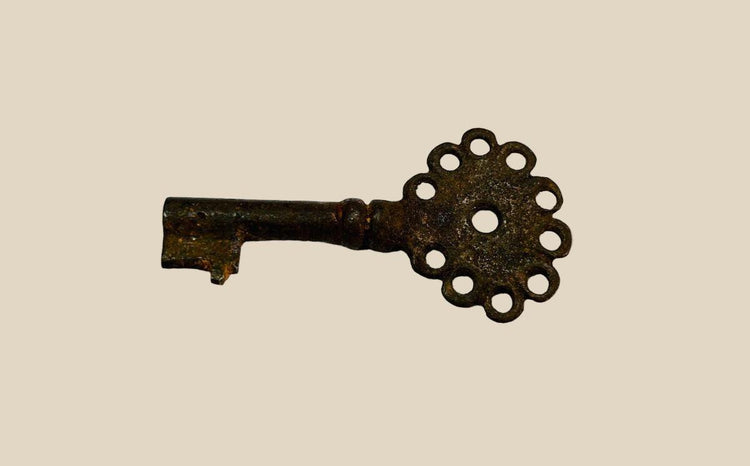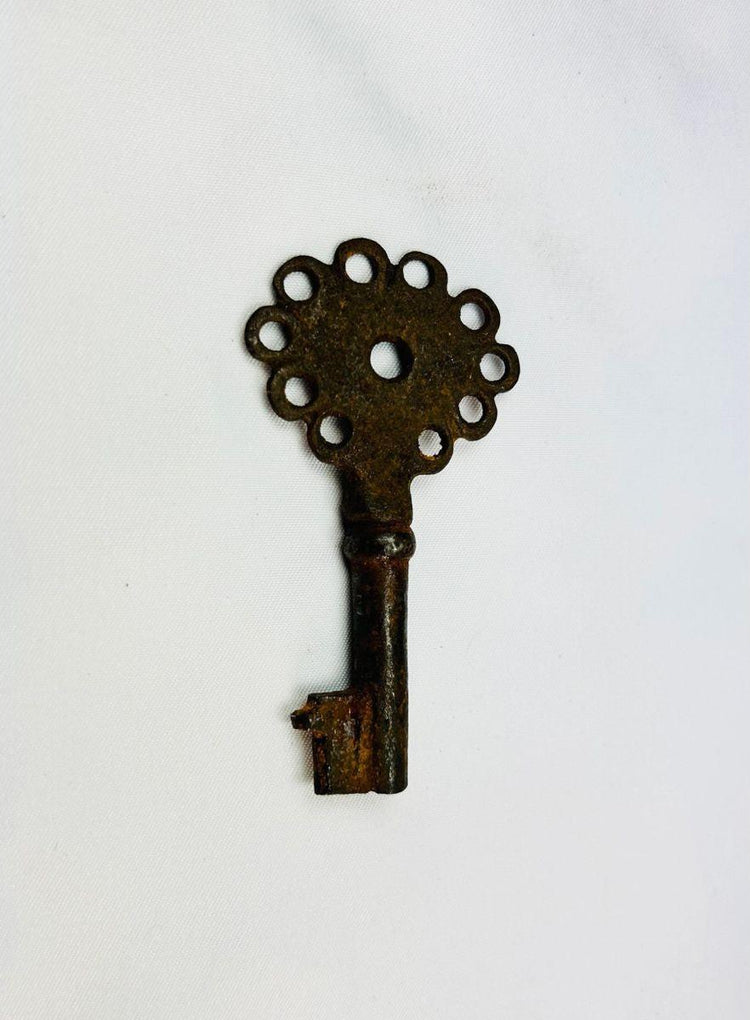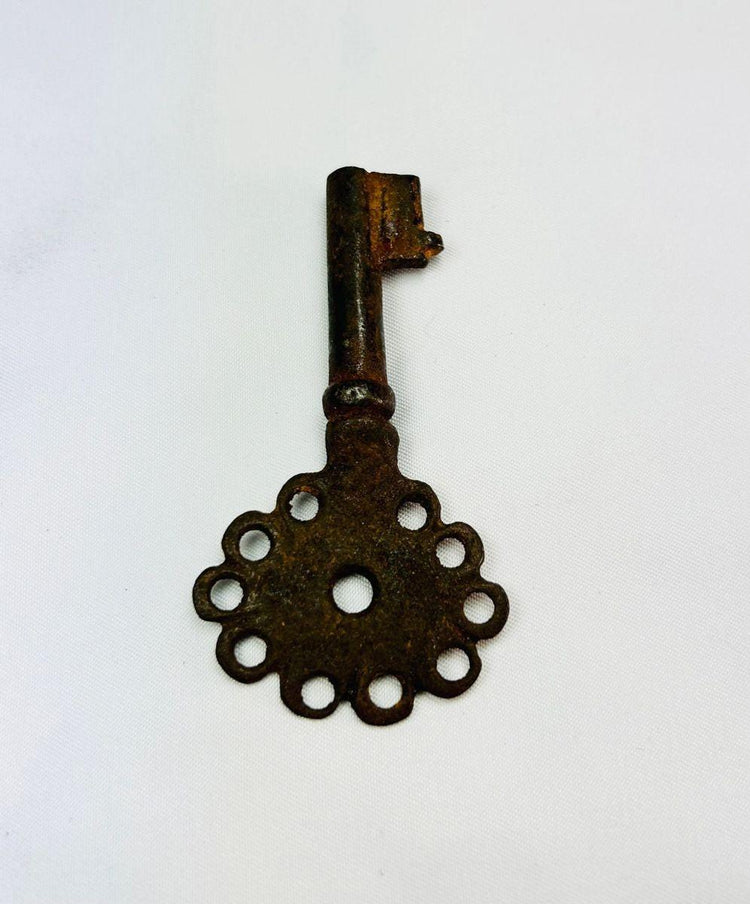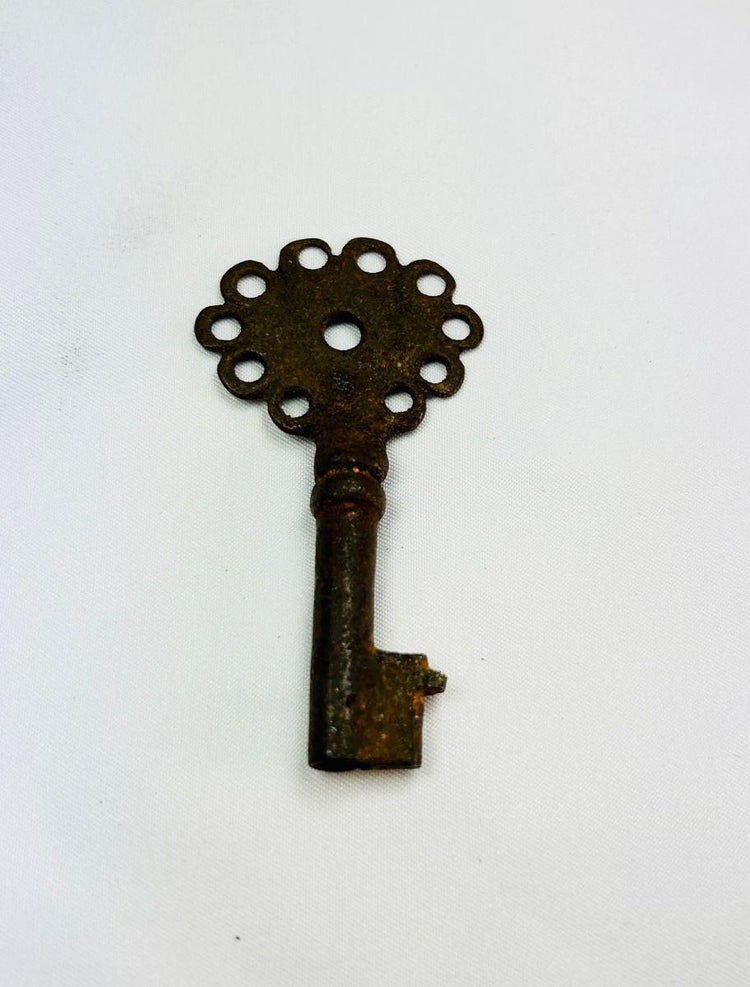Spanish Colonial Iron Key | Pierced Head Design | 16th–18th Century
Description
More
Less
Historical Context & Origin
Region: Spanish Colonial territories (likely Americas)
Material: Iron with oxidized surface
Period: Spanish Empire, circa 16th–18th century
Description
This Spanish colonial key is a finely crafted example of early functional ironwork from the height of the Spanish Empire. Measuring 2.75 inches in length, it features a pierced head, a distinctive design element that may have served both functional and decorative purposes. Its compact form and robust construction reflect the utilitarian needs of the period while carrying the aesthetic characteristics of colonial craftsmanship.
Features
- Pierced head design, characteristic of colonial keys
- Forged iron construction with natural oxidation
- Compact form suitable for doors, chests, or secure storage
- Aged surface with gentle patina from centuries of use
Cultural Significance
Keys were not only practical objects in the Spanish Empire but also symbols of authority and control. They represented access, security, and power—essential elements in colonial life across the Americas, Africa, and Asia. In settlements and garrisons, keys like this secured doors, strongboxes, or storerooms, underscoring the Spanish administration’s need for both order and protection. The pierced head may also suggest symbolic or ceremonial use, further elevating its role within colonial society.
Condition
Good condition for age, with light oxidation and surface wear consistent with centuries of burial or use. The pierced head remains intact, and the shank and bit are clearly defined. Oxidization enhances the artifact’s authenticity and character without compromising its form.
Dimensions
Length: 2.75 in
Age
Circa 16th–18th century
Learn More
Trace the Development of Skeleton Keys Through European History
Description
Historical Context & Origin
Region: Spanish Colonial territories (likely Americas)
Material: Iron with oxidized surface
Period: Spanish Empire, circa 16th–18th century
Description
This Spanish colonial key is a finely crafted example of early functional ironwork from the height of the Spanish Empire. Measuring 2.75 inches in length, it features a pierced head, a distinctive design element that may have served both functional and decorative purposes. Its compact form and robust construction reflect the utilitarian needs of the period while carrying the aesthetic characteristics of colonial craftsmanship.
Features
- Pierced head design, characteristic of colonial keys
- Forged iron construction with natural oxidation
- Compact form suitable for doors, chests, or secure storage
- Aged surface with gentle patina from centuries of use
Cultural Significance
Keys were not only practical objects in the Spanish Empire but also symbols of authority and control. They represented access, security, and power—essential elements in colonial life across the Americas, Africa, and Asia. In settlements and garrisons, keys like this secured doors, strongboxes, or storerooms, underscoring the Spanish administration’s need for both order and protection. The pierced head may also suggest symbolic or ceremonial use, further elevating its role within colonial society.
Condition
Good condition for age, with light oxidation and surface wear consistent with centuries of burial or use. The pierced head remains intact, and the shank and bit are clearly defined. Oxidization enhances the artifact’s authenticity and character without compromising its form.
Dimensions
Length: 2.75 in
Age
Circa 16th–18th century
Learn More
Trace the Development of Skeleton Keys Through European History
You May Also Like

















